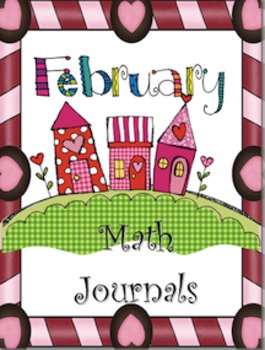August to May Everyday Math Journals Powerpoint
Our Schoolhouse Treasures
197 Followers
Grade Levels
K - 2nd
Subjects
Resource Type
Standards
CCSSK.NBT.A.1
CCSS1.NBT.C.4
CCSS1.NBT.C.6
CCSS2.NBT.B.9
CCSSK.OA.A.1
Formats Included
- Zip
Pages
290 pages
Our Schoolhouse Treasures
197 Followers
Description
“Everyday Math Journals" provides you at your fingertips a year’s worth of quality daily math problems for your students to journal. It uses a read it, draw it, write it method to help the students solve the daily problem. In time, you will observe the students learning to develop many strategies for problem solving.
Doing math journals provides the students the opportunity to use their higher order thinking, to rationalize how to solve a problem, to explain how they arrived at their answer, and to answer in a complete sentence. Students, in time, realize that there are more than one way to solve a problem which helps to develop their reasoning abilities and improve their problem solving skills. Sometimes even if a student arrived at the wrong answer, but can give a good and reasonable explanation for how he/she got the answer is evidence that they were thinking through the process! And that is what we want!
Some areas covered by Everyday Math Journals for First Grade are:
Addition
Subtraction
Geometry
Measurement
Numbers and Operations
Time
Money
Fractions
This is a PowerPoint document. It is not intended to be copied and glued as most daily math journal products are. However, if that is how you would like to use it and have the copies at your school, then it certainly can be used in that way. In our classrooms, each of our students have their own “math journal.” They are taught at the beginning of the year how to date the top of each page, skip a line, begin drawing a picture to help to arrive at their answer, write a number sentence (if applicable to the problem), and write the answer in a complete sentence. After the students are given a few minutes to complete and solve on their own, a student goes to the SmartBoard to solve and share with the class.
Doing math journals provides the students the opportunity to use their higher order thinking, to rationalize how to solve a problem, to explain how they arrived at their answer, and to answer in a complete sentence. Students, in time, realize that there are more than one way to solve a problem which helps to develop their reasoning abilities and improve their problem solving skills. Sometimes even if a student arrived at the wrong answer, but can give a good and reasonable explanation for how he/she got the answer is evidence that they were thinking through the process! And that is what we want!
Some areas covered by Everyday Math Journals for First Grade are:
Addition
Subtraction
Geometry
Measurement
Numbers and Operations
Time
Money
Fractions
This is a PowerPoint document. It is not intended to be copied and glued as most daily math journal products are. However, if that is how you would like to use it and have the copies at your school, then it certainly can be used in that way. In our classrooms, each of our students have their own “math journal.” They are taught at the beginning of the year how to date the top of each page, skip a line, begin drawing a picture to help to arrive at their answer, write a number sentence (if applicable to the problem), and write the answer in a complete sentence. After the students are given a few minutes to complete and solve on their own, a student goes to the SmartBoard to solve and share with the class.
Total Pages
290 pages
Answer Key
N/A
Teaching Duration
1 Year
Report this resource to TPT
Reported resources will be reviewed by our team. Report this resource to let us know if this resource violates TPT’s content guidelines.
Standards
to see state-specific standards (only available in the US).
CCSSK.NBT.A.1
Compose and decompose numbers from 11 to 19 into ten ones and some further ones, e.g., by using objects or drawings, and record each composition or decomposition by a drawing or equation (e.g., 18 = 10 + 8); understand that these numbers are composed of ten ones and one, two, three, four, five, six, seven, eight, or nine ones.
CCSS1.NBT.C.4
Add within 100, including adding a two-digit number and a one-digit number, and adding a two-digit number and a multiple of 10, using concrete models or drawings and strategies based on place value, properties of operations, and/or the relationship between addition and subtraction; relate the strategy to a written method and explain the reasoning used. Understand that in adding two-digit numbers, one adds tens and tens, ones and ones; and sometimes it is necessary to compose a ten.
CCSS1.NBT.C.6
Subtract multiples of 10 in the range 10-90 from multiples of 10 in the range 10-90 (positive or zero differences), using concrete models or drawings and strategies based on place value, properties of operations, and/or the relationship between addition and subtraction; relate the strategy to a written method and explain the reasoning used.
CCSS2.NBT.B.9
Explain why addition and subtraction strategies work, using place value and the properties of operations.
CCSSK.OA.A.1
Represent addition and subtraction with objects, fingers, mental images, drawings, sounds (e.g., claps), acting out situations, verbal explanations, expressions, or equations.





